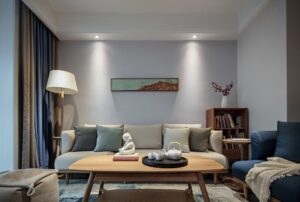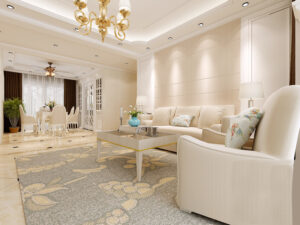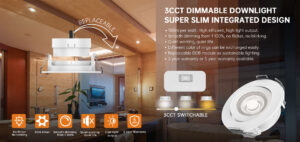Recessed spotlights have become essential in modern lighting, combining functionality with sleek design. These fixtures, installed flush with the ceiling, offer a clean, minimalist aesthetic that enhances any space. Whether you’re illuminating a cozy living room, accentuating architectural details, or brightening a workspace, choosing the right recessed spotlights is crucial for achieving the perfect balance of light, style, and efficiency. This guide will walk you through the key considerations for selecting recessed spotlights in 2025, helping you make informed decisions tailored to your specific needs and preferences within the European market.
Understanding Recessed Spotlights and Their Benefits
Recessed spotlights, also known as recessed downlights or can lights, are lighting fixtures embedded into ceilings, providing a streamlined appearance. They are valued for their versatility, able to provide ambient, task, or accent lighting depending on the fixture type and placement. Their unobtrusive design reduces visual clutter, making rooms feel more spacious and modern, a feature particularly appreciated in European homes. Additionally, recessed spotlights are generally safer in homes and commercial spaces because their installation minimizes exposure to hot bulbs or wiring.
Key Advantages of Recessed Spotlights
- Versatility: Suitable for general illumination, focused task lighting, or accentuating features like artwork or textured walls.
- Aesthetic Appeal: Their flush installation preserves clean ceiling lines and complements various interior styles prevalent in European design.
- Energy Efficiency: Modern LED recessed spotlights consume less power while providing superior brightness, aligning with European energy efficiency standards.
- Safety: Reduced risk of accidental contact with hot components.
- Smart Integration: Many models now support smart home systems, enabling remote control and automation, a growing trend in European households. For more on smart lighting options, see Radians’ smart light category.
- Space Saving: Ideal for low-ceiling rooms where pendant lights might obstruct the space.
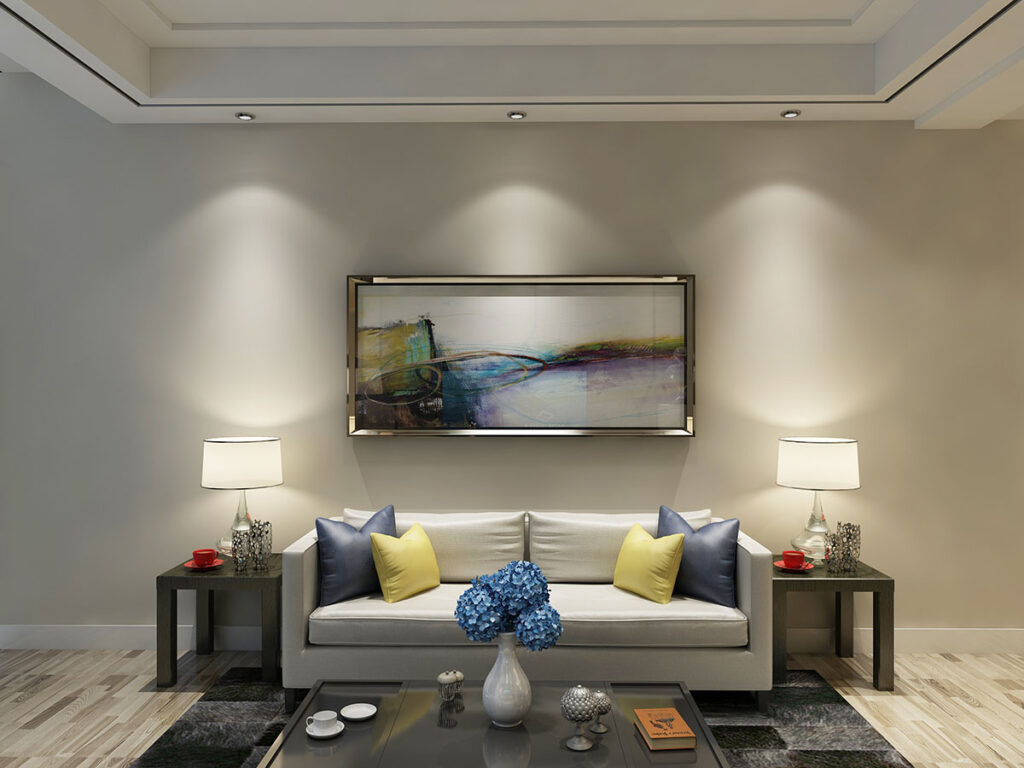
Choosing Recessed Spotlights for Different Areas
Each room in your home has varying levels of humidity, which affects the type of recessed spotlight you should choose. We categorize spaces as follows:
- Dry Areas: Hallways, attics, living rooms, bedrooms
- Damp Areas: Bathrooms, covered patios, garden rooms
- Wet Areas: Directly above showerheads or areas exposed to splashes
Humidity levels clearly dictate the waterproof rating of your fixtures, expressed as an IP (Ingress Protection) value.
Recessed Spotlights for Dry Rooms
If you’re looking for recessed spotlights for dry rooms, you have the most options available. You don’t need to worry about the IP rating since these fixtures won’t come into direct contact with moisture. However, you are free to choose higher IP-rated options if desired.
Recessed Spotlights for Damp Areas
Damp areas are prone to moisture accumulation, so your fixtures may come into light contact with water. Consider spaces like bathrooms, balconies, or garden rooms. For these areas, opt for recessed spotlights with an IP rating of 44 or higher—IP54 or IP65 are excellent choices.
Recessed Spotlights for Wet Areas
In wet areas where fixtures may be directly exposed to significant amounts of water or steam—such as above showers or bathtubs—select recessed spotlights with an IP65 rating. This ensures maximum protection against moisture.
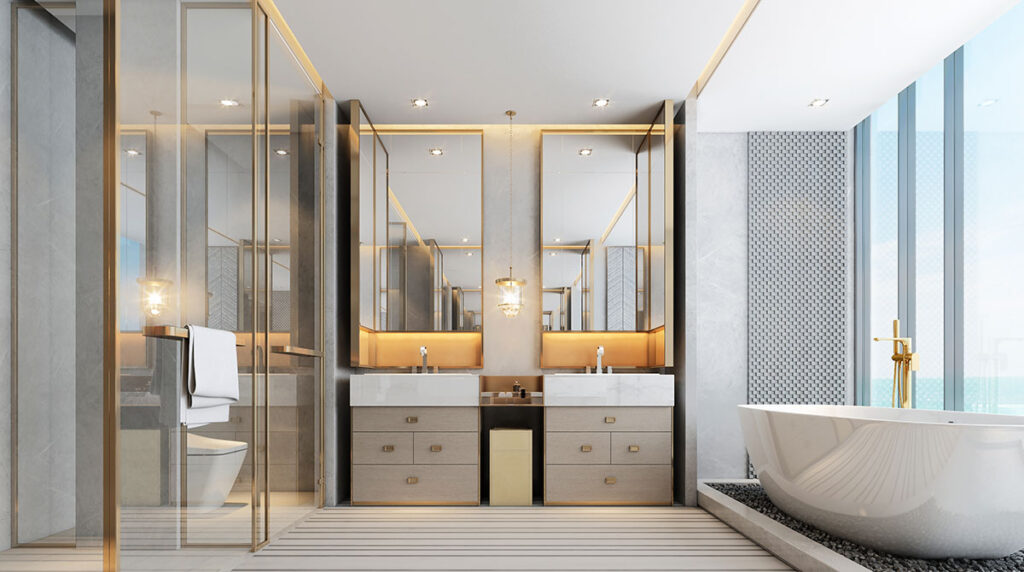
Radians Lighting: Expertise in Recessed Spotlights
Radians Lighting, headquartered in Foshan, China, operates a 3,000m² manufacturing facility specializing in high-quality LED lighting solutions tailored for the European market. With CE and RoHS certifications, Radians emphasizes innovation, customization, and rigorous quality control to meet diverse lighting needs across Germany, the Netherlands, France, Sweden, Denmark, Norway, the UK, and beyond. Radians is also recognized as a reliable recessed spots supplier.
Customization and Design Excellence
Radians offers extensive customization options, allowing clients to specify sizes, wattages, color temperatures, and smart features. Their design team collaborates closely with customers to develop lighting solutions that comply with regional standards and preferences, ensuring seamless integration into any project.
Product Quality and Range
Radians’ product portfolio includes a wide array of recessed downlights, such as:
- Slim and Ultra-Slim Downlights for minimalist interiors. Their ultra-slim downlights fit perfectly in modern European homes.
- Dimmable and Smart Downlights with advanced control features.
- IC-Rated and Air-Tight Downlights for enhanced safety and energy efficiency.
- Anti-Glare and Adjustable Spotlights for visual comfort and flexible lighting design.
For commercial projects, Radians also supplies commercial LED downlights designed for robust performance and longevity.
Comparing Recessed Spotlights with Other Lighting Types
Recessed Spotlights vs. Surface Mounted Spotlights
| Feature | Recessed Spotlights | Surface Mounted Spotlights |
|---|---|---|
| Aesthetics | Clean, minimalist, flush with ceiling | More visible, can be a design feature themselves |
| Installation | Requires ceiling cavity, more complex install | Easier to install, no ceiling cavity needed |
| Space Saving | Saves vertical space, ideal for low ceilings | Can take up more vertical space |
| Light Control | Directional control depends on trim type | Often more adjustable, better directional control |
| Cost | Can be more expensive due to installation | Generally less expensive to install |
| Application | Modern homes, offices, retail spaces | Retrofits, spaces where recessed installation is difficult |
Recessed Spotlights vs. LED Panel Lights
| Feature | Recessed Spotlights | LED Panel Lights |
|---|---|---|
| Aesthetics | Focused light, highlights specific areas | Even, diffused light, illuminates broad areas |
| Light Output | More directional, higher intensity in focused area | Softer, more uniform light |
| Size | Smaller, individual fixtures | Larger, panel-shaped fixtures |
| Application | Accent lighting, task lighting, modern interiors | General lighting, offices, retail spaces |
| Installation | Requires individual cutouts | Often requires a larger cutout or suspension system |
| Energy Efficiency | Similar efficiency, but spotlights can be more efficient when directing light where needed | Even distribution can lead to more overall use. |
Comparing Popular Recessed Spotlight Types
To aid your decision, here is a comparison of common recessed spotlight types highlighting their advantages and disadvantages:| Type | Advantages | Disadvantages | Best For |
|---|---|---|---|
| Fixed Downlights | Simple installation, cost-effective | Limited direction control | General ambient lighting |
| Adjustable (Gimbal) | Directional lighting, highlights features | Slightly higher cost, more complex install | Accent lighting, artwork |
| Baffle Trim | Reduces glare, soft light | Less bright than reflector trims | Living rooms, bedrooms |
| Reflector Trim | Bright, focused light | Can cause glare if not positioned well | Kitchens, workspaces |
| Shower Rated | Moisture resistant, safe for wet areas | Limited styles, higher price | Bathrooms, showers |
| Wall-Wash | Even light on vertical surfaces | Requires precise placement | Galleries, hallways |
Installation and Placement Tips
Proper placement is key to maximizing the effectiveness of recessed spotlights. A common rule is spacing lights about half the ceiling height apart. For example, with a 2.4-meter ceiling, place lights approximately 1.2 meters apart. Consider layering lighting by combining recessed spotlights with other fixtures to balance ambient and task lighting. Follow local electrical codes and regulations for safe installation.
Here are some additional tips for specific rooms:
- Kitchens: Use recessed spotlights for general lighting and under-cabinet lighting to illuminate countertops. For enhancing kitchen lighting, explore Radians’ kitchen under-cabinet downlights.
- Bathrooms: Choose shower-rated downlights for wet areas and ensure adequate ventilation. Radians offers a range of bathroom spotlights designed for safety and durability.
- Living Rooms: Combine recessed lights with lamps and wall lights to create a layered lighting scheme. For ideas, see our living room lighting tips.
- Bedrooms: Use warm white downlights and consider dimming options for a relaxing atmosphere. Radians provides a curated selection of bedroom downlights with dimming capabilities.
Conclusion
Choosing the right recessed spotlights involves balancing size, brightness, color temperature, trim style, smart features, and application scenario to suit your space and lighting goals. Advances in LED technology and smart integration have expanded options, allowing for highly customizable, energy-efficient, and aesthetically pleasing lighting solutions. Always prioritize compliance with European safety and energy efficiency standards.
Radians Lighting stands out as a premier manufacturer offering tailored, high-quality recessed downlights designed to meet the diverse needs of European markets. Their commitment to innovation, customization, and compliance with safety and efficiency standards makes them a reliable choice for your next lighting project. Radians also offers resources for those looking for a dependable recessed downlight fixture supplier.
By carefully considering the factors outlined in this guide and exploring trusted suppliers like Radians, you can confidently select recessed spotlights that enhance your environment with style, comfort, and efficiency. For further insights, you might find it useful to read about the latest trends in LED downlight design for 2025.
FAQ
How do I choose the right recessed spotlight for my living room?
Choosing the right recessed spotlight for your living room involves considering factors like room size, ceiling type, and desired lighting effect. For a modern look, opt for LED Recessed Spotlights which are energy-efficient and provide a sleek appearance. Consider trimless options for a seamless integration with your ceiling.
Are recessed spotlights suitable for bathrooms?
Yes, recessed spotlights are suitable for bathrooms, especially if they are moisture-resistant. Look for products with an IP rating of at least IP44 to ensure they can withstand the humid environment. Our Bathroom and Shower Recessed Lights are designed to be both functional and stylish, providing the necessary lighting while maintaining safety standards.
How do I ensure my recessed spotlights are energy-efficient?
To ensure your recessed spotlights are energy-efficient, opt for LED downlights, which consume less power and last longer than traditional bulbs. Additionally, consider dimmable options to adjust light intensity according to your needs, reducing energy consumption during daylight hours.


